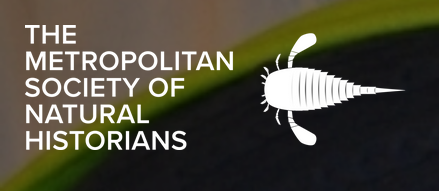Gathering atop a metamorphic rock formation in Isham Park in upper Manhattan, Dr. Jasmine Bayron and the citizen scientists of the MSNH came together on February 27, 2022 to explore Manhattan schist studded with muscovite mica that formed nearly 450 million years ago. The rock formation began its life when the continents weren’t separated as they are today, but rather when they formed a much larger landmass known as Panagea. Dr. Bayron, who recently defended her work at the CUNY Graduate Center and is a current member of NASA’s OSIRIS-Rex Mission Sample Team, working to analyze samples of meteorites for organic compounds, began the day by demonstrating a simple way to test for the presence of certain types of marble (calcium carbonate): shaving off some rock dust and mixing it with a dilute solution of hydrochloric acid, to see if the resulting reaction produces carbon dioxide gas. She went on to explain how Inwood marble, as its known, came to be so prevalent in the area after it cooled millions of years ago. The marble layers, which originally lay horizontally, were acted on by incredibly high pressures of surrounding rock that caused the ductile marble to stretch and rotate from a horizontal position to vertical – hence the reason we see these layers exposed below our feet.
Continuing on to nearby Inwood Park, Dr. Bayron pointed to instances of garnet, New York State’s Gem, a semi-precious stone that also formed due to a high-pressure environment over millennia. The walk ended up at one of the highest points of Inwood Park where the group could look across the Hudson River (a valley formed by glacial erosion) toward the Palisades, a formation of diabase created nearly 200 million years ago that was originally hidden from view but was exposed over time due to erosion.
To see photos from this event, please visit our gallery. All photo credit goes to Glenn Doherty.
Dr. Jasmine Bayron is a meteorite petrologist who's research mainly focuses on extracting information from 4.6 billion year old meteorites whose chemical, isotopic, and mineralogical compositions can help foster a deeper understanding of ancient asteroids that are important for the development of planet Earth as we know it and the formation of rocky planets in the Solar System. She is affiliated with the American Museum of Natural History, NASA's OSIRIS-REx Asteroid Sample Return Mission and the City University of New York.


